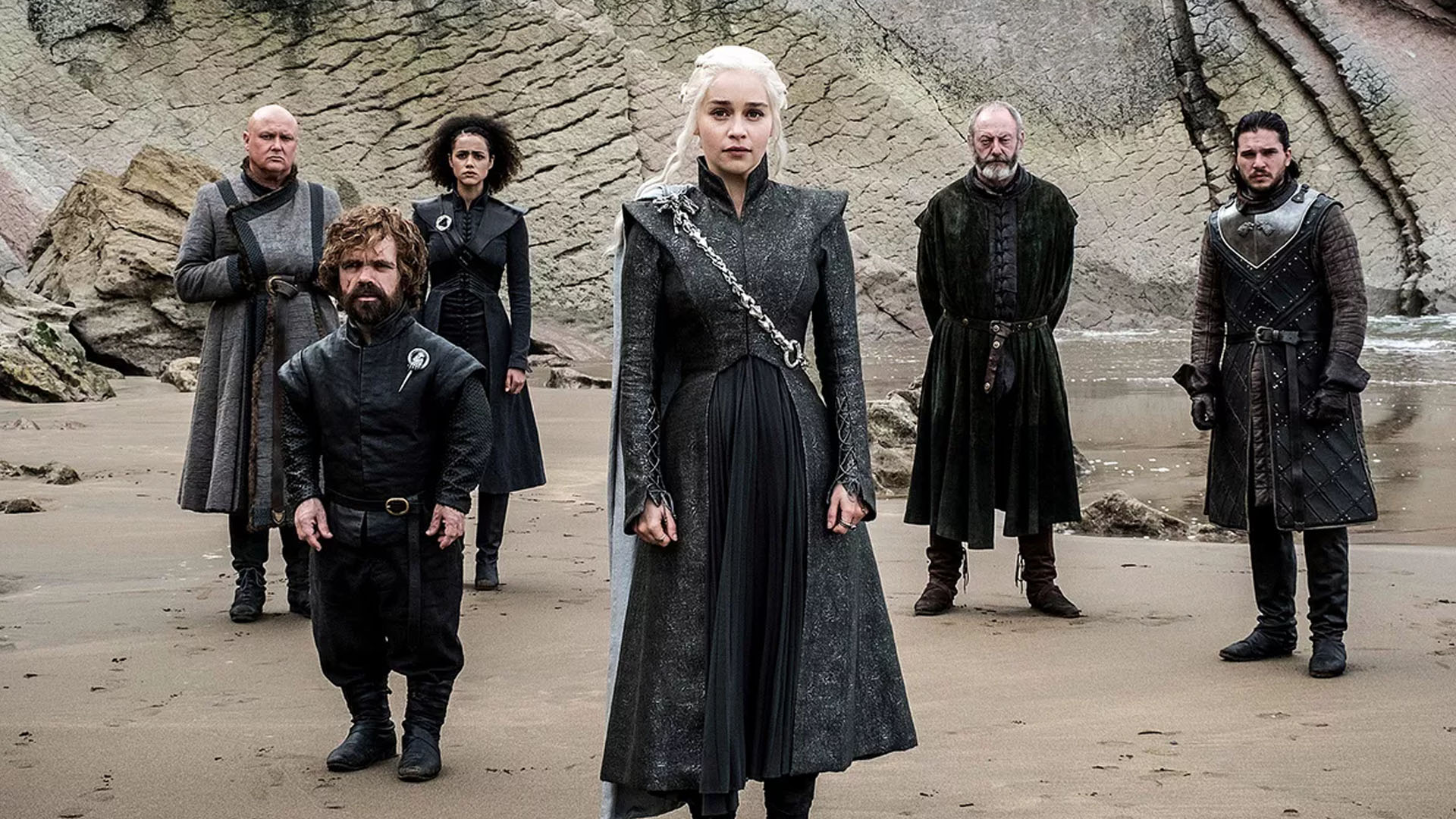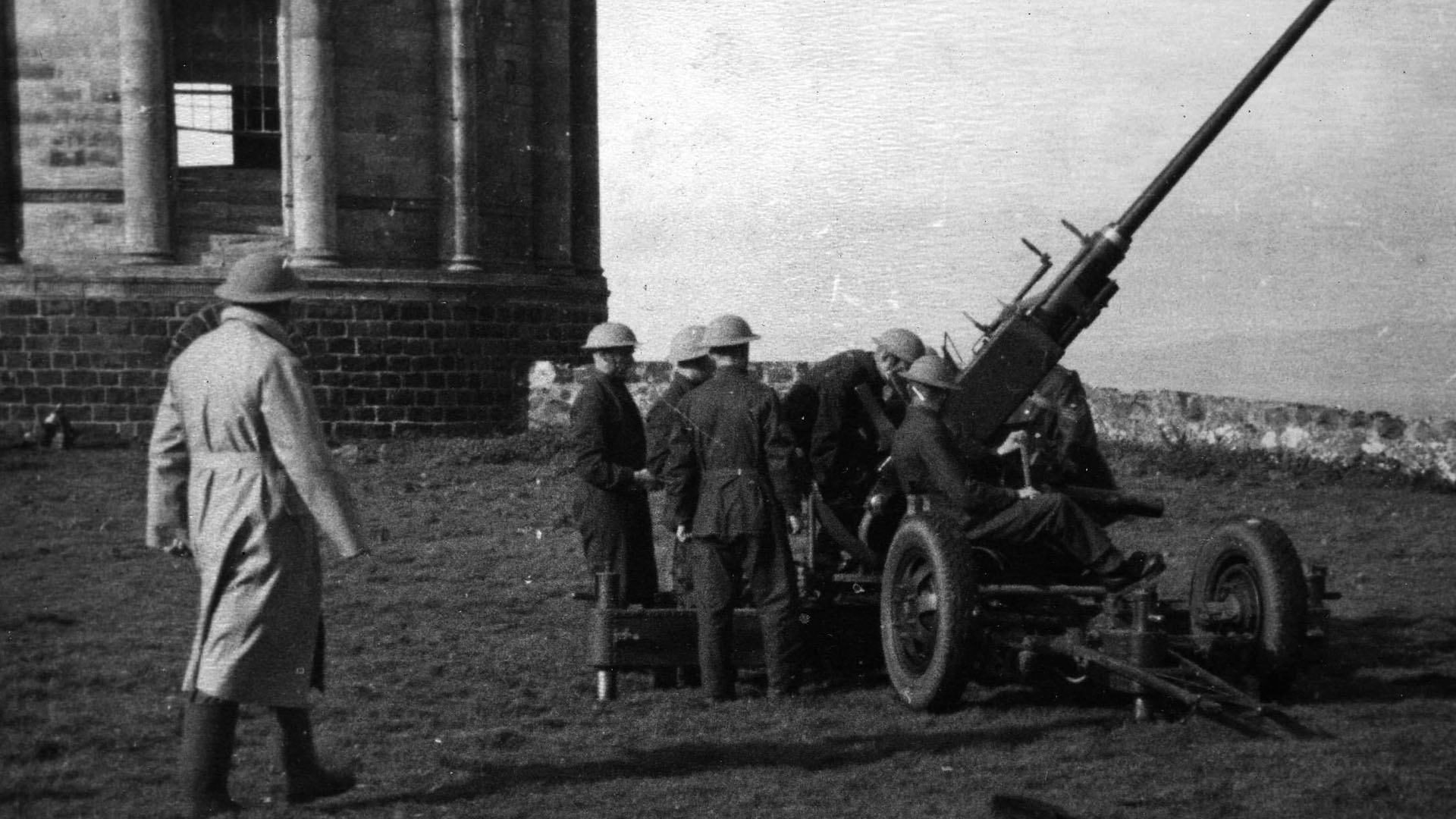In 2010, a new TV show called Game of Thrones began filming in Northern Ireland. Over the course of most of the following decade, it became a huge global success. This critical acclaim combined with the stunning scenery in the show helped put Northern Ireland on the map for TV and filmmakers.
The sweeping landscapes of rural Ulster and the grand houses, country estates, and ruined castles are perfect backdrops for the HBO show. Of course, each of these places has its roots in real Irish history outside of the fictional. This history often includes stories from wartime Northern Ireland.
Audley's Field, Portloughan, Co. Down
Named after its Anglo-Norman owners in the 16th century, Audley's Field and Castle became the property of the Ward family in 1646.
In Game of Thrones, Audley’s Field is the backdrop for Robb Stark’s Camp in Season 2. It is also the scene of Alton Lannister’s imprisonment. Look out across the water and you might spot the wreck of SS Empire Tana in Ballyhenry Bay. Allied forces captured the Italian ship in 1943 and used it as part of the Gooseberry Breakwater at Sword Beach on D-Day.
Ballintoy, Co. Antrim
The small fishing village of Ballintoy on Co. Antrim's north coast lies only a 10 minute drive from the famous Giant's Causeway tourist attraction.
The village harbour doubles as The Iron Islands in the TV show. It is best remembered for the return of Theon Greyjoy. Throughout World War Two, the rugged coast around Ballintoy made an excellent training ground for troops. The land was not suitable for farming and both British and American forces made use of the ocean, cliffs, and hills.
Binevenagh Mountain, Co. Londonderry
Binevenagh Mountain in Co. Londonderry offers spectacular views over Lough Foyle, Roe Valley, Inishowen. On a clear day, you can see the west coast of Scotland.
In Season 5, the steep slopes form the Dothraki Grasslands where a dragon rescues Daenerys Targaryen. In 1943, Operational Training Units at Aghanloo Airfield named it Ben Twitch. This referenced the nerves experienced in flying low over it. On 26th June 1944, Consolidated Liberator FL977 came down on Binevenagh killing all on board.
Downhill Strand, Castlerock, Co. Londonderry
Downhill Strand is an 11km stretch of the northwest coast of Northern Ireland. It is a conservation area featuring waterfalls, sand dunes, and the impressive Mussenden Temple.
The Game of Thrones production makes use of the stunning beach as Dragonstone, where Melisandre proclaimed: “For the night is dark and full of terrors”. Like many beaches around Ulster, Downhill Strand features a pillbox. This one, however, is further camouflaged with basalt rock. Nearby in what was Downhill House, the Royal Air Force based officers during the Battle of the Atlantic.
Dunluce Castle, Bushmills, Co. Antrim
Dunluce Castle is one of Northern Ireland's most iconic landmarks. The medieval ruins cling precariously to a basalt outcrop on the rugged Co. Antrim coast.
On TV, the ruins double as Pyke Castle, the House of Greyjoy, from where they rule over the Iron Islands. Dunluce Castle was already in ruins before the outbreak of World War Two and served no military role. Photos from the 1940s show it was popular with visiting Americans even then.
Glenariff, Co. Antrim
In Co. Antrim, Glenariff is "The Queen Of The Glens". It is home to the spectacular Glenariff Forest Park with beautiful scenery and stunning waterfalls.
Fans of Game of Thrones may recognise the landscape as Runestone in the Vale of Arryn. Here, Littlefinger and Sansa Stark watched Robin Arryn’s attempt at duelling. On 31st January 1940, Avro Anson N4943 of No. 1 Air Observers Navigation School crashed into high ground in Glenariff killing all those on board.
Lough Neagh, Co. Antrim
Lough Neagh is the largest freshwater lake in the United Kingdom by area. Legend has it, the giant Fionn Mac Cumhaill created the lake scooping up earth to throw at a rival.
The myths and legends surrounding Lough Neagh continue in HBO’s Game of Thrones where Season 5 sees the lake transformed to The Summer Sea and the Smoking Sea. During the Second World War, Lough Neagh was the centre of a network of airfields in Co. Antrim and Co. Londonderry including RAF Cluntoe and RAF Aldergrove.

Imperial War Museum Photo: CH 2682 (Part of the Air Ministry Official Collection). A Hawker Hurricane Mark I of No 245 Squadron RAF, taxies into the Squadron's dispersal at Aldergrove, County Antrim, after a shipping patrol, past other aircraft standing at readiness. Copyright Flight Lieutenant Bertrand John Henry Daventry.
Magheramorne Quarry, Larne, Co. Antrim
Magheramorne Quarry is a long-abandoned site in Co. Antrim. It was a source of limestone for much of the 19th and 20th centuries. There are plans for regeneration of the area.
In Game of Thrones, the quarry is a filming location for Castle Black although many CGI fills and other special effects are in use. On 17th April 1946, a tragic accident occurred in the quarry when Thomas Barr Murray died on his 11th birthday. The local schoolboy had picked up a grenade, left behind from when the military used Magheramorne Quarry as a training range.
Mourne Mountains, Co. Down
The Mourne Mountains are one of the must-see attractions in Northern Ireland offering beautiful views across the Co. Down coast as well as great walking trails.
Parts of the mountain range appear throughout the TV series, most notably as the entrance to Vaes Dothrak. During the war, many British and USAAF planes came down in the mountains. It was also here that General George S Patton addressed the men of US Army 5th Infantry Division before they began their journey to the landing beaches of Normandy.
Tollymore Forest, Bryansford, Co. Down
Tollymore Forest is a 600 hectare estate of ancient redwoods and Gothic stone arches near Bryansford, Co. Down. The site sits on the slopes of the Mourne Mountains.
In Game of Thrones, the landscape makes up The Haunted Forest where the men of the Night’s Watch meet The White Walkers. The early 1940s saw a huge influx of United States Army troops throughout Co. Down. Officers made their base in Tollymore Forest’s now demolished Bryansford House. Soldiers reported seeing “The Blue Lady” in The Haunted Forest.
Visit Northern Ireland
While the hit HBO television show may have left our screens in 2019, the stunning Game of Thrones locations in Northern Ireland remain. Whether you’re a fan of the programme, interested in local history, or just enjoy some picturesque views, all are worth visiting during your time in Northern Ireland.


